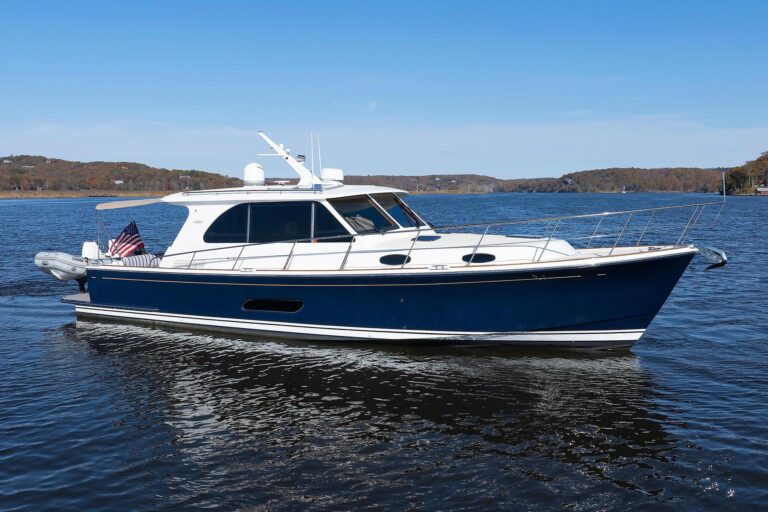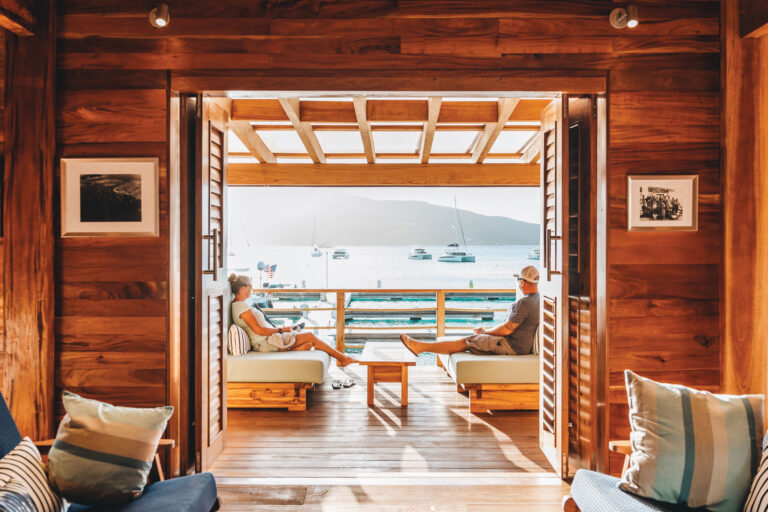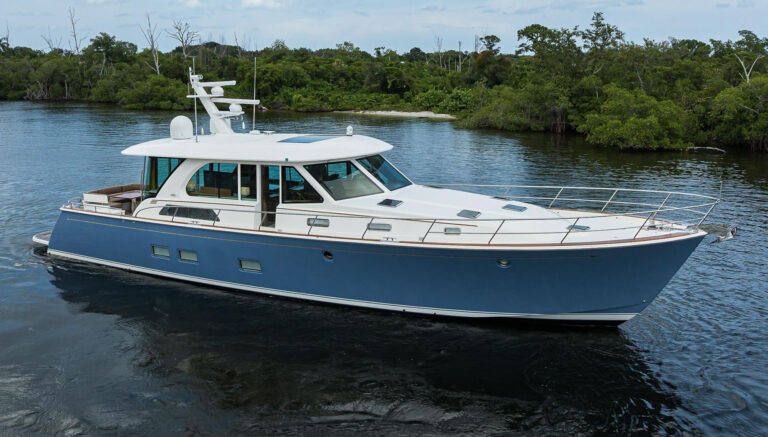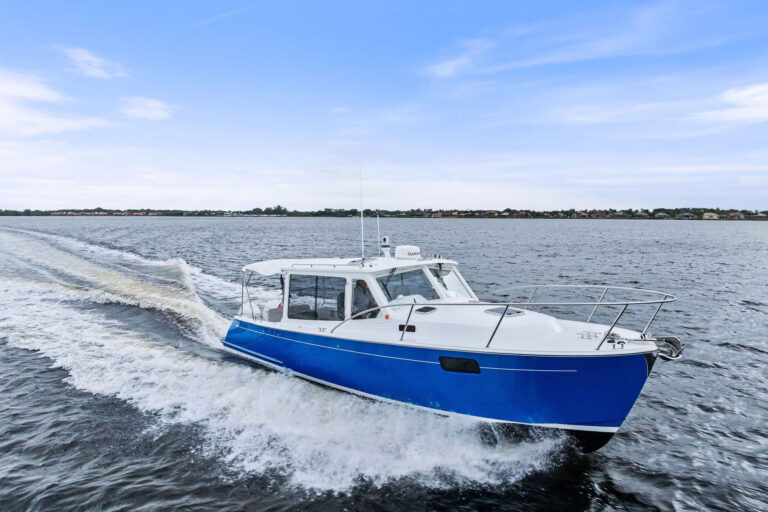Art has the power to engage our imagination, mystify our sense of the humanly possible, trigger a wide range of emotions or simply startle us with its audacity. Even so, it’s still a surprise how the International America’s Cup Class yachts America3 and Il Moro, fully rigged and resting high and dry on the lawn in front of the Museum of Fine Arts in Boston, conform to all of the above criteria.
“Art” is what the artist declares it to be. But can a collector claim the same right? In this case, the yachts are part of William (Bill) I. Koch’s collection of his favorite paintings, sculptures, and artifacts-an exhibit called “The Things I Love” which ran this fall-and their presence before the classically styled museum seemed at once outrageous and perfectly normal. I approached the museum from the east, motoring along Huntington Avenue-or Avenue of the Arts, as the city now calls it-amid the heady cultural atmosphere of Northeastern University, the historic Symphony Hall, and the New England Conservatory of Music. Searching the street ahead for the right-hand turn into the parking lot I didn’t notice the yachts until I was nearly on top of them. I gasped. There they stood, heeling at a gravity-defying 15 degrees, the mast of each raking the sky far above the museum’s roofline. I had to put some distance between this scene and myself.
The museum’s public relations staff arranged for photographer Onne van der Wal and me to view the display from the roof of Northeastern University’s six-story dormitory across the street from the museum. That vantage point let us feel the full impact of the exhibit. A bed of crushed shells in the shape of each yacht’s waterline mimicked, in an impressionistic way, the flow of water beneath and around each hull. Even more surrealistic, the bronze statue of a horse and rider atop a granite pedestal-a permanent fixture of the museum-occupied a place of honor in the V-shaped space between the yachts. “The windward mark?” I asked aloud. Keeping the statue to starboard, America3 (on a port tack) led Il Moro (on a starboard tack). Our view from the roof also revealed the system of anchors and guy wires that kept the 65-foot, 50,000-pound yachts from taking a terrestrial knockdown. During my drive-by earlier that morning, I hadn’t noticed the wires. Each yacht merely seemed perched on its keel, the winged ballast bulb magically suspended inches above the ground.
Ross Weene, design engineer at Rodger Martin Design, which conceived the form this exhibit would take, explained the challenges he and Rodger Martin faced. The traditional way to display yachts of this length and weight is to place them upright on custom-built cradles. Too static, too conventional and boring, the design team agreed. They met with Bill Koch at his house in Palm Beach, Fl., last December. During that meeting, they agreed that the exhibit would have the most impact if they could keep the supporting structure away from the boats.
“One idea,” Weene said, “was to support the boats on a couple of posts, like you’d see in a museum display case. Pretty simple, but you’d see the posts.” The second idea called for fabricating a steel wave for each boat. The wave would rise through the keel and cradle the hull at its fore-and-aft point of balance. “We though it was nice,” Weene said, “but it was adding sculpture to sculpture.”
Realizing the wave motif added visual complexity to an exhibit that cried out for simplicity sent Weene on a search for another alternative. He found it in G¸nter Behnisch’s Olympic Stadium in Munich, Germany, designed for the 1972 games. A huge canopy, resembling a grouping of circus tents open at the sides, protects the seating areas of the stadium, while elaborate system of wires anchored to stanchions located outside the stadium supports the canopy-almost invisibly.
Weene adopted the concept for the Koch exhibit. Each yacht would rest on its keel, which required a substantial base to support the weight. The 10-foot by 7-foot concrete slab would be anchored to the ground by seven helical screws driven 16 feet into the layer of clay beneath the mantle of landfill that makes up most of the Fenway area of Boston. A large steel plate imbedded into each slab would carry a socket of the type used in the feet of outrigger cranes. A steel ball bolted to the ballast bulb would fit into this socket and allow the yachts to move slightly without torquing their keel. A finite element analysis established the size of the tethers and the location of each anchor. Goetz Custom Boats reinforced the hulls at the point of attachment for each tether. The exhibit could withstand winds of hurricane force-but without the rigs.
From modern art on the lawn, Koch’s “Things I Love” continued inside with an eclectic mix of modern, Impressionist, Western and marine art, plus a collection of artifacts from the American Wild West. Koch has a model of every yacht that ever competed for the America’s Cup. The Museum of Fine Arts displayed them, fully rigged, in massive glass cases arranged in a split circle in the lower rotunda. Half-models of those yachts adorned the walls of the rotunda. The presence of all that genius and beauty in miniature nearly brought tears to my eyes.
Marine paintings by James Edward Buttersworth, Fitz Henry Lane and Winslow Homer capture the joy of being afloat and the horror of war at sea. The collection of artifacts-handguns, rifles and clothing-from the frontier days of the American West reminded me of how difficult and dangerous daily life was. Koch’s sensitivity to the plight of Native Americans shows in his selection of clothing and thoughtfully done Charles Marion Russell paintings. Paintings by Degas, Cezanne, Monet, Renoir, Picasso and other masters reflect the influence Koch’s mother (an artist) and father (a modest collector) had on his love for fine art. Now, consider Koch’s degrees in chemical engineering and his technological approach to winning the America’s Cup in 1992. No wonder his artistic sensibilities allowed him to place two IACC yachts in close proximity to the fine arts. It’s where they belong.









